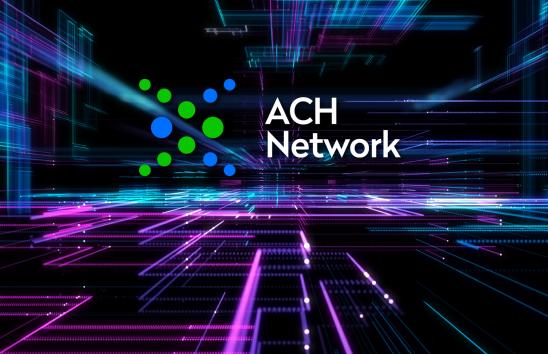Reimagining ACH: From Back-Office Processing to Strategic Business Intelligence
Author

In 2024, ACH payments moved $86.2 trillion across the U.S. financial system. Yet, despite this scale, many financial institutions still rely on manual, paper-based, or rules-driven processes that have been in place for decades.
This challenge, coupled with aging technology not keeping pace with modernization trends, amplifies the issue at hand. With the rise of artificial intelligence (AI), ACH operations are on the cusp of a new era—one that shifts the workforce from "operations associates" managing processes and exceptions to "operational analysts" managing ACH business intelligence and helping drive an organization forward.
Let’s explore some key areas that are ripe for AI-related enhancement:
Predictive Exception Management
- AI models trained on ACH data can learn to recognize patterns—such as insufficient funds, duplicate files, unresolved notification of changes (NOCs), and proper return actions—and automatically recommend, or even execute, corrective actions. Implementing AI can reduce manual review, freeing staff to focus on higher-value work such as analyzing root causes, evaluating product effectiveness, and seeking strategic expansion opportunities.
Time Fraud and Anomaly Detection
- Payment fraud is becoming increasingly sophisticated, with fraudsters leveraging technological advancements similar to those in financial services but with a nefarious purpose. Unlike static rules engines, AI systems can continuously learn from transaction patterns, behavioral data, and cross-channel signals to detect anomalies in real time. As noted in the pymnts.com report, 71% of Financial Institutions Turn to AI to Fight Faster Payments Fraud, that number is up from 66% in 2023.
Continuous Compliance and Risk Oversight
- AI can automate regulatory compliance monitoring, flagging potential Nacha Rule compliance issues, OFAC concerns, and suspicious activity in real time. These systems act as digital "co-pilots" for compliance teams, surfacing early warnings rather than relying on post-transaction reviews.
This evolution is as much about people as it is about technology. In traditional ACH departments, staff often focus on daily reconciliation, exception queues, and batch balancing. In an AI-enabled future, their role becomes more analytical and strategic, interpreting model outputs, understanding customer behaviors, and partnering with technology teams to fine-tune performance.
According to McKinsey's blog, "Upskilling and reskilling priorities for the Gen AI era," two-thirds of institutions that adopted gen AI are placing greater emphasis on strategic approaches to future talent and skill requirements. The message here is clear: the ACH operator of the past is becoming the payments data analyst of the future.
Financial institutions don't have to overhaul everything at once. Many should start with narrow use cases—such as AI-driven return code analysis, automated exception routing, or anomaly-based risk scoring—and expand as confidence grows. The key is to pair automation with human oversight to ensure accountability and regulatory alignment.
ACH provides a stable and dependable infrastructure. Now, it's poised to become intelligent infrastructure—where humans and machines collaborate to move money faster, safer, and smarter than ever before.
You don’t have to go on the AI journey by yourself. Nacha Consulting has the expertise needed to help you develop and refine AI models that meet compliance requirements and align with risk management focus.
Click here to schedule a free 15-minute consultation with Nacha Consulting and learn more about how we can help your organization with its use of AI in ACH operations.








